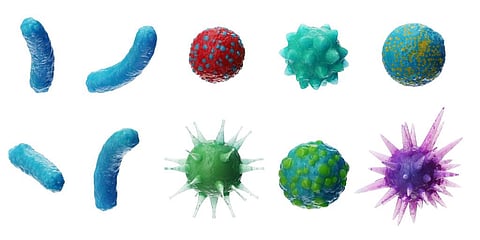

The World Health Organization (WHO) launched a global scientific process to update its priority pathogen list for the first time since the beginning of the COVID-19 pandemic, according to a statement released by the United Nations health agency November 21, 2022.
The process of drawing up the new list was started in 2017 and the revised list is expected to be out by the first quarter of 2023.
Scientists will go over 25 virus families, bacteria and diseases X — where ‘Disease X’ is a moniker for unidentified pathogens that have the potential to become a public health crisis.
Scientific relevance, public health concerns, socio economic impact, access and equity are being considered as the criteria to identify which pathogen will make the list.
Targeting priority pathogens and virus families for research and development of countermeasures is essential for a fast and effective epidemic and pandemic response, said Dr Michael Ryan, executive-director of WHO’s Health Emergencies Programme. “Without significant investments in resource and development prior to the COVID-19 pandemic, it would not have been possible to have safe and effective vaccines developed in record time.”
The current list includes COVID-19, Crimean-Congo haemorrhagic fever, Ebola virus disease and Marburg virus disease, Lassa fever, Middle East respiratory syndrome (MERS) and severe acute respiratory syndrome (SARS), Nipah and henipaviral diseases, Rift Valley fever, Zika and ‘Disease X’.
The global health body’s R&D blueprint for these diseases put in place a roadmap to address and take action on key concerns, the statement noted. To avert a large-scale crisis, effective tests, vaccines and medicines are made available at an accelerated pace, it added.
Tools to chart out, facilitate and implement clinical trials of vaccines, treatment and tests are also built under this blueprint.
The updated list of priority pathogens will enjoy a similar targeted focus.
The priority pathogen list is not exhaustive, nor does it make any claims about which pathogen will cause the public health emergency of international concern, WHO clarified.
Dr Soumya Swaminathan, WHO chief scientist, described it as a reference point for the research community on where to focus energies to manage the next threat. “It is developed together with experts in the field and is the agreed direction for where we — as a global research community — need to invest energy and funds to develop tests, treatments and vaccines,” she added in a WHO statement.
Since the COVID-19 pandemic, there has been renewed interest in predicting and preventing future pandemics. WHO’s priority pathogen list tackles known pathogens but ‘Disease X’ gives the space to deploy research and development to better understand novel diseases.
Several similar efforts have been made in the past by private and government firms. Most notable among them were the Pandemic Prevention Institute set up by WHO in collaboration with the United States-based philanthropy Rockefeller Foundation, the US Agency for International Development’s PREDICT and DEEP-VZN, Global Virome Project and the Abbott Pandemic Defence Coalition.
Experts, however, are still wary of hedging their bets on the efficiency of viral discovery in preventing the next global public health threat. Having said that, such understanding about known and unknown pathogens is key in preparedness and remaining vigilant, they acknowledged.